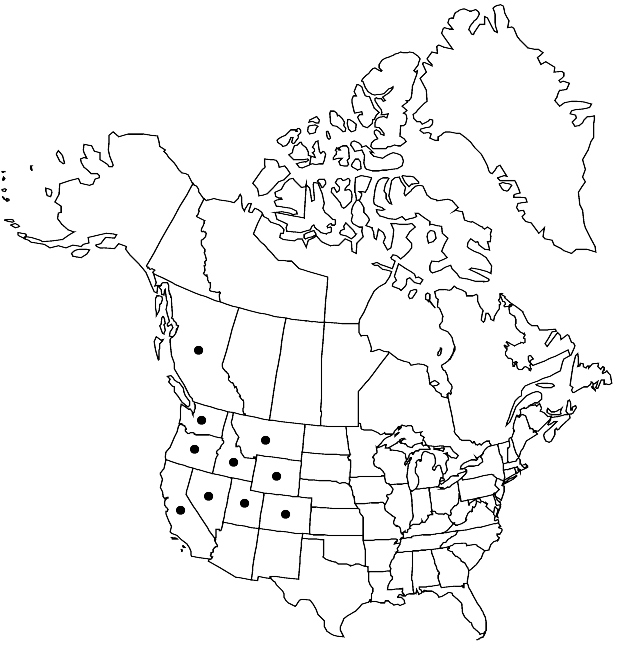Cardamine oligosperma
in J. Torrey and A. Gray, Fl. N. Amer. 1: 85. 1838.
Annuals or biennials; usually sparsely hirsute (at least proximally), rarely glabrous. Rhizomes absent. Stems (simple or few from base), erect to ascending, (not flexuous), unbranched or branched distally, (0.5–)0.8–3.2(–4.1) dm, usually pubescent throughout or proximally, rarely glabrous. Basal leaves (persistent to anthesis), rosulate, pinnately compound, 5–9(–13)-foliolate, 2–8.5(–11) cm, leaflets petiolulate or subsessile; petiole 1–6 cm; lateral leaflets petiolulate or subsessile, blade obovate to oblanceolate, smaller than terminal, margins entire or crenate; terminal leaflet (petiolule 0.1–0.7 cm), blade usually orbicular to ovate, rarely oblong, 0.4–1.5(–2.3) cm × 3–10(–13) mm, base cordate to rounded, margins entire, or crenate-dentate to obscurely 3 or 5-lobed, (surfaces often hirsute, sometimes glabrous). Cauline leaves 3–8, pinnately compound, similar to basal, smaller and fewer distally, petiolate, leaflets petiolulate or subsessile; petiole 0.5–2 cm, base not auriculate. Racemes ebracteate. Fruiting pedicels divaricate-ascending, (2–)3–9(–12) mm. Flowers: sepals oblong, 1.3–1.8(–2) × 0.5–1 mm, lateral pair not saccate basally; petals white, narrowly spatulate to oblanceolate, 2.5–3.5 × 0.9–1.5 mm (not clawed); filaments: median pairs 1.7–2.5 mm, lateral pair 1.2–2 mm; anthers ovate, 0.3–0.5 mm. Fruits linear, (torulose), (1.3–)1.6–2.8 cm × 1–1.7 mm; (valves glabrous or sparsely pubescent); ovules 16–36(–42) per ovary; style 0.4–1(–1.5) mm. Seeds brown, oblong, 1–1.6 × 0.8–1.2 mm. 2n = 16.
Phenology: Flowering Mar–Jul.
Habitat: Stream banks, shady banks, creek bottoms, lakeshores, meadows, moist areas, wooded slopes
Elevation: 50-3300 m
Distribution

B.C., Calif., Colo., Idaho, Mont., Nev., Oreg., Utah, Wash., Wyo., Mexico (Baja California).
Discussion
Selected References
None.